When David Bowie + Malcolm McLaren simultaneously seeded the 70s by appearing in the same issue of underground paper IT
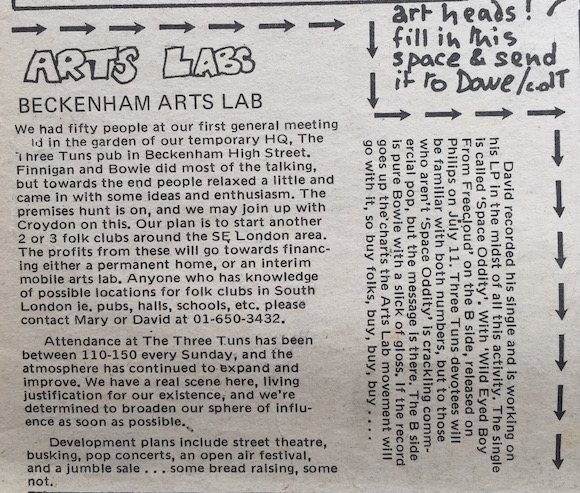
//Box advert for the Beckenham Arts Lab run by David Bowie and Mary Finnigan in IT #59, July 1969//
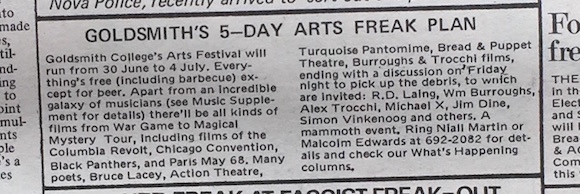
//News story about the Goldsmiths Arts Festival organised by Malcolm Edwards and his fellow student Niall Martin in IT #59//
Researching my archive during lockdown for a project has given me the opportunity to thoroughly assess individual publications, none more so than the 59th issue of underground paper IT, which hit the streets in early July 1969.
This particular edition features a couple of small items which provide clues as to the countercultural activities at the time of two Londoners who would go on to define pop culture in the 1970s: David Bowie and Malcolm McLaren.
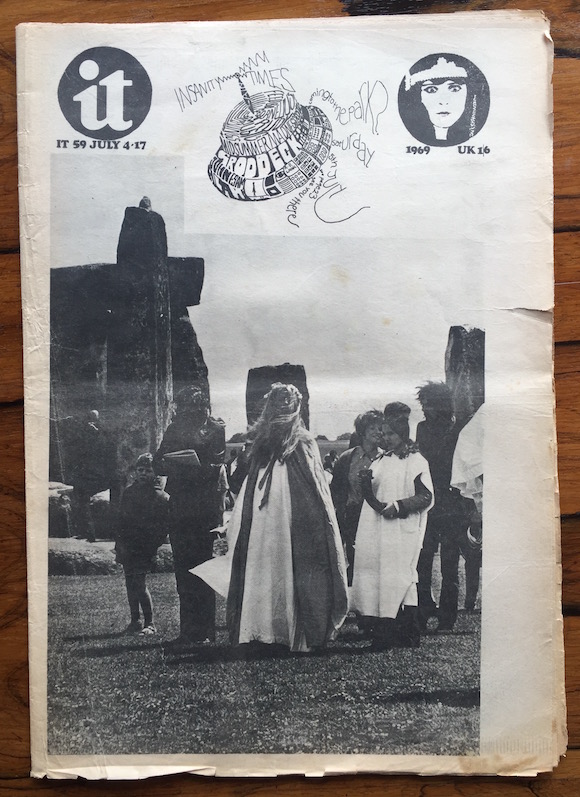
//Front page, IT, #59, July 4-17, 1969//
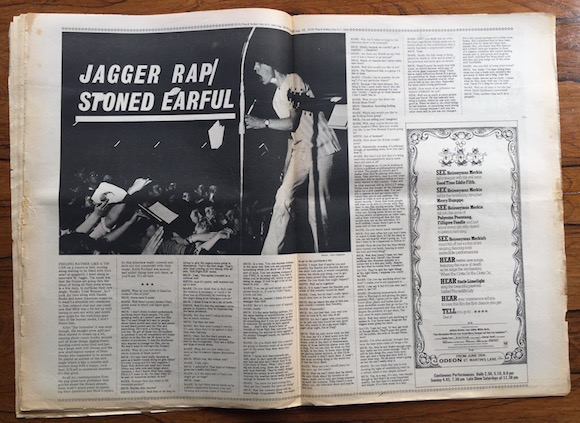
//Interview with Mick Jagger ahead of the performance by the Rolling Stones in Hyde Park the weekend the publication hit the streets//
Preoccupied with the free performance by the Rolling Stones in London’s Hyde Park on July 5 (this is the concert which became a requiem for founding member Brian Jones, who died a few days before), the issue delivers an atypically eclectic mix for the period, including interviews with Mick Jagger, the rock group Family and radical psychiatrist RD Laing, an overview of the career of interstellar jazzer Sun Ra, news stories on William Burroughs’ arrival in England, a piece by Scientologist charlatan L. Ron Hubbard and an advert for Plastic Ono Band’s Give Peace A Chance.

//News page with Goldsmiths Festival story underneath Bill Burroughs photo caption//

//Inside back cover, with Beckenham Arts Lab announcement above the IT subs half-pager on the left//
An item on a news page and a boxed line ad on the inside back cover set out events organised just a few miles from each other by Bowie and McLaren, who were born in the capital a year apart and were then 22 and 23 respectively.
Bowie and his friend (and sometime IT contributor) Mary Finnigan appear in the announcement about the arts lab they ran at The Three Tuns pub in Beckenham that year.
This details how weekly attendance had risen from 50 to 150-plus and that there were plans for “street theatre, busking, pop concerts, an open air festival and a jumble sale… some bread raising. some not”. Flipped on its side and squeezed into the box is text informing readers that Bowie’s Space Oddity single had been released: “If the record goes up the charts, the Arts Lab movement will go with it…” As we know, the single became a hit but sent the ever-changing Bowie’s career on an entirely different trajectory.
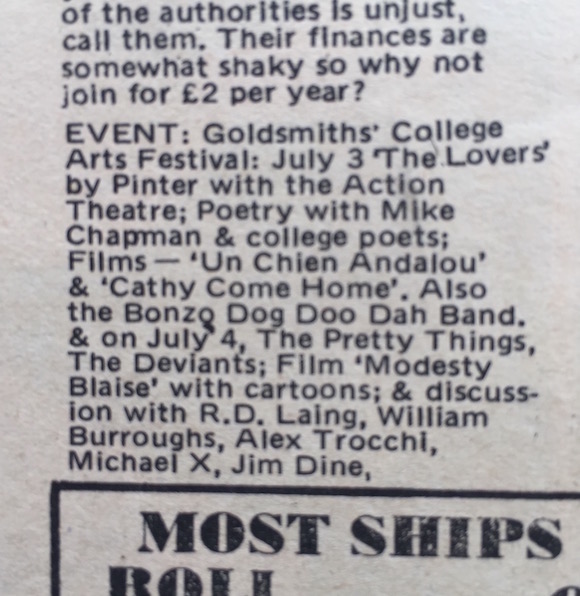
//The festival also appeared in the event listings in the same issue of IT//
Meanwhile the “Goldsmiths 5-Day Arts Freak Plan” organisers Malcolm McLaren (then using his stepfather’s surname Edwards) and his fellow art students including friend Niall Martin announced that their five day event would include screenings of such underground staples as the surrealist classic Un Chien Andalou (coincidentally screened before David Bowie’s concerts on the 1976 Thin White Duke tour), a performance of Harold Pinter’s The Lovers and gigs by groups including The Pretty Things and the Bonzo Dog Doo-Dah Band.
Robert Fripp of King Crimson has confirmed that his prog-rock band played the event; the following day they joined the line-up supporting the Stones in the park.
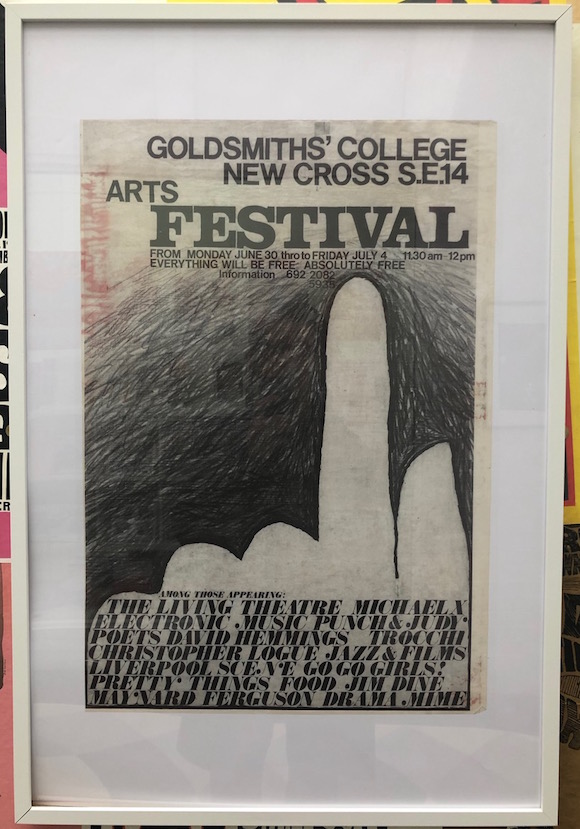
//Post for the 1969 Festival in the Goldsmiths archive. Photograph: Andrew Renton//
Modelled on the countercultural Dialectics of Liberation conference McLaren attended the year before at Camden’s The Roundhouse, the Goldsmiths arts festival culminated in a panel to which he ambitiously invited both Burroughs and Laing, as well as the beat writer Alexander Trocchi, black power activist Michael X and artist Jim Dine.
As detailed in my book The Life & Times of Malcolm McLaren, the event was satisfyingly disruptive. Police were called when feminists invaded the stage in protest at the all-male line-up and the story made the local paper. “Of course Malcolm was there with a grin on his face having a great time,” said attendee Paul Thompson. “But then he often had a grin on his face in those days.”
Buy copies of The Life & Times of Malcolm McLaren from your local bookseller. You may also purchase from amazon here.
